Paint can help stylize the concrete surfaces in and around your home, such as walls, floors, patios, and more. If your concrete is in need of a makeover, you might be considering painting it yourself.
For those DIY painting your concrete for the first time, it’s important to find the right paintbrush for concrete. This article will help you find the best paintbrush for concrete by covering the following:
- 9 best paintbrushes for concrete
- What’s the best type of paintbrush for concrete walls?
- Best way to paint concrete: brush, roller, or spray?
- Best way to paint concrete without marks
Before we get into the best ways to paint concrete, let’s dive into some options for the best brush for concrete. If you’re working on exterior projects, check out our guide to the best paintbrushes for exterior house painting.
9 best paintbrushes for concrete
There are many options available for paint tools, but only some will work best with concrete. Here are our recommendations for paintbrushes for concrete.
1. Precision Defined Deck Stain Brush
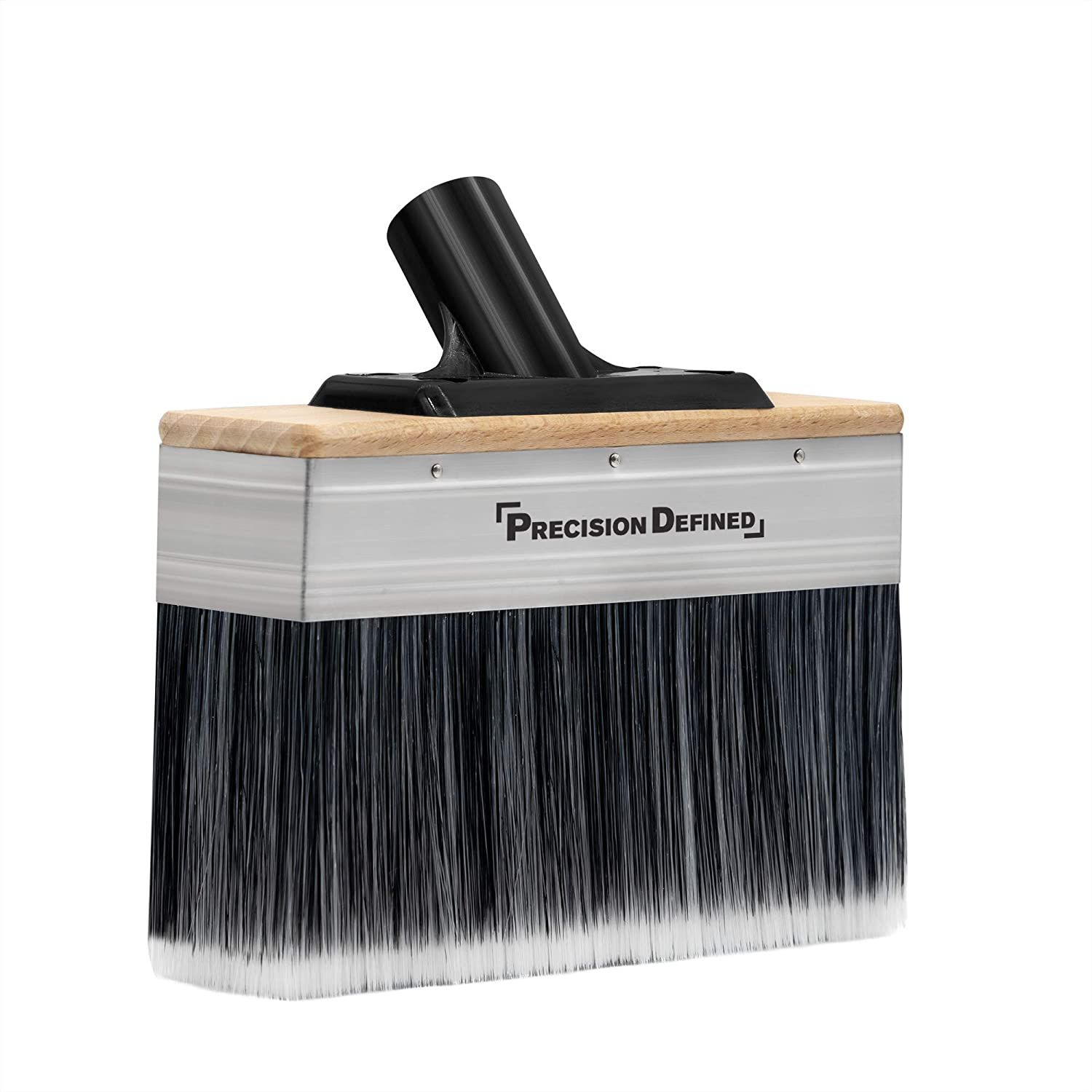
Image Credit: Amazon.ca
Type: Brush
Quantity: 1
Size: 5-inch
Material: Synthetic material
Best Feature: Full coverage
Despite its name, the Precision Defined Deck Stain Brush is an incredibly versatile paintbrush that is great for concrete. This brush can be used with paints, stains, and sealers, and it has super thick bristles that hold more coating. It’s a great choice for achieving full coverage fast, including in difficult areas.
2. Purdy Colossus Roller Cover

Image Credit: Amazon.ca
Type: Roller
Quantity: 1
Size: ¾-inch nap, 18-inch length
Material: Nylon
Best Feature: Load and release capabilities
For those needing to cover more space, go with this Purdy Colossus Roller Cover. It’s made with quality nylon to help you achieve full coverage in less time. It’s also designed to load and release more paint, helping you get the best finish on semi-rough and rough surfaces.
3. HomeRight Super Finish Max Sprayer

Image Credit: Amazon.ca
Type: Spray
Quantity: 1
Size: 1.5 kg
Best Feature: Versatile with adjustable settings
The HomeRight Super Finish Max Sprayer is an affordable and lightweight option for those that want to try using a paint sprayer. It’s designed for use with multiple projects using a wide variety of materials. It is easily customizable so you can get the spray pattern that’s best for your project.
4. Purdy XL Elite Glide Angular Trim Paintbrush

Image credit: Amazon.ca
Type: Brush
Quantity: 1
Size: 2.5-inch
Material: Chinex/Polyester
Best Feature: Smooth application
For a brush that will give you smooth results on your concrete, opt for the Purdy XL Elite Glide Angular Trim Paintbrush. This brush’s bristles are stiff and durable, allowing you to reuse it again and again. It works with a wide variety of paint bases, allowing you to use it on a range of projects.
5. Wooster Super/Fab Roller Covers
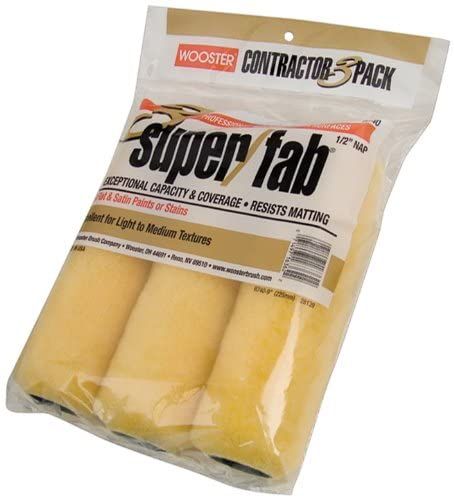
Image Credit: Amazon.ca
Type: Roller
Quantity: 3
Size: ½-inch nap, 9-inch length
Material: Proprietary golden yellow fabric
Best Feature: High quality make
If you’re looking for a multi-pack for roller covers, choose this 3-pack of Wooster Super/Fab Roller Covers. These covers are made with high-quality synthetic fabric that resists matting and will give your rougher concrete a smooth finish. They can be used with all paints, stains, and waterproofing.
6. Graco Magnum X5 Stand Airless Paint Sprayer
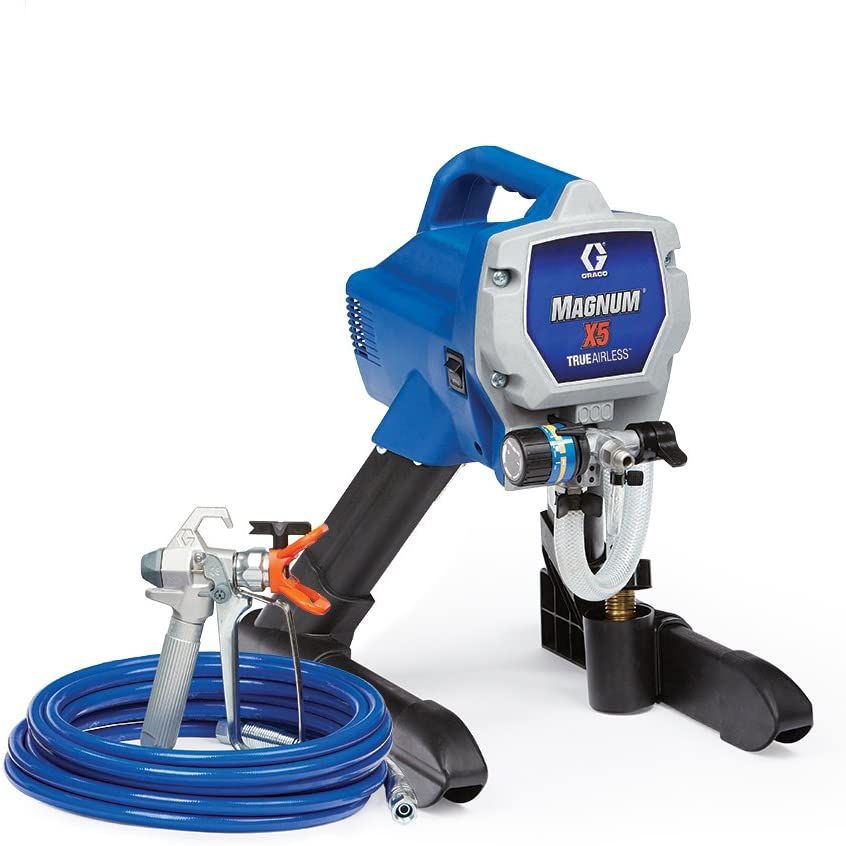
Image Credit: Amazon.ca
Type: Spray
Quantity: 1
Size: 6.8 kg
Best Feature: Controllable paint flow
For an easy-to-use sprayer, choose the Graco Magnum X5 Stand Airless Paint Sprayer. It can easily be adjusted to help you get the right paint flow for your project. It is also easy to clean and has a suction tube that allows you to spray paint directly from the can.
7. Wooster Shortcut Angle Sash Paintbrush
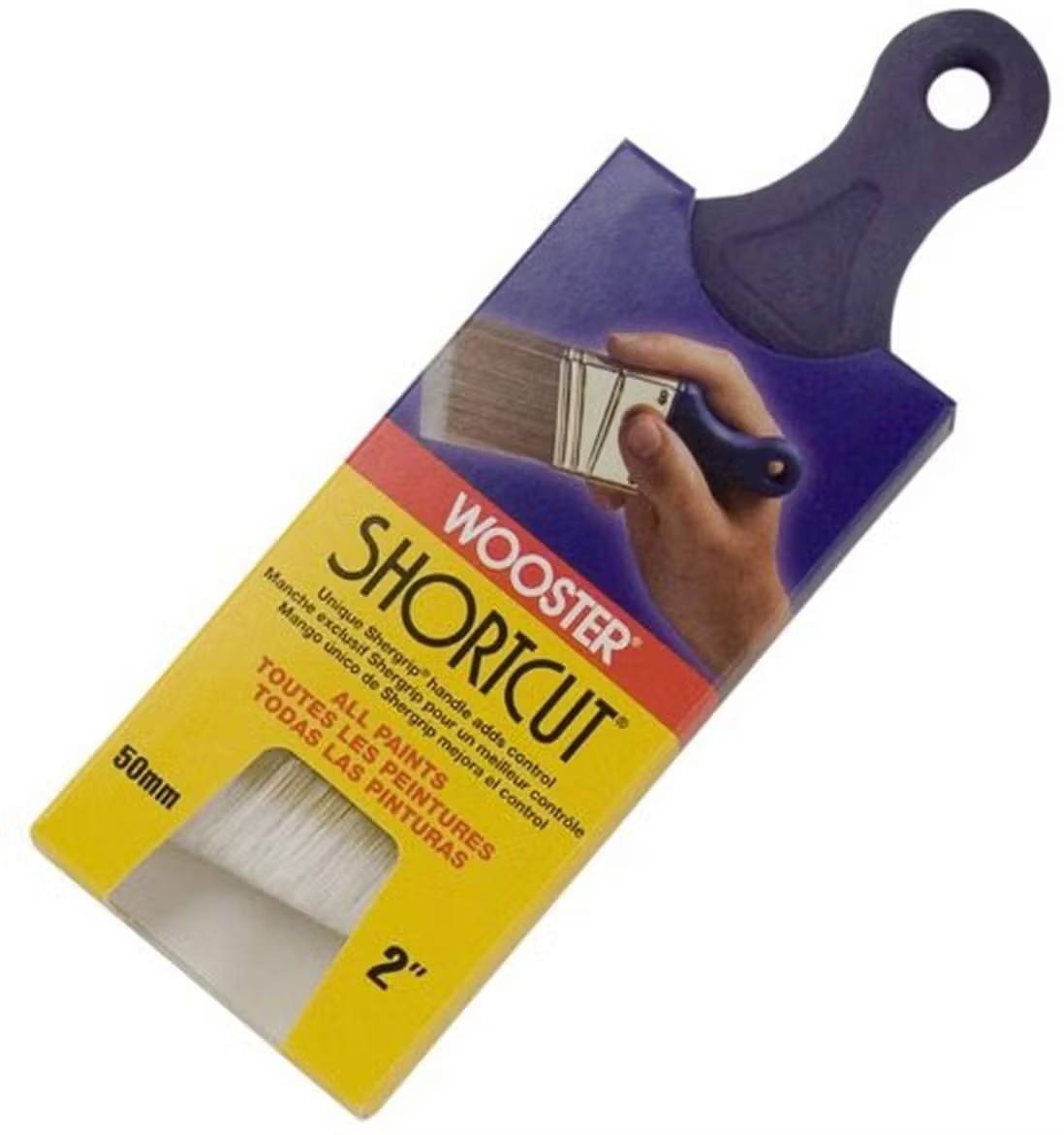
Image Credit: Amazon.ca
Type: Brush
Quantity: 1
Size: 2-inch
Material: Nylon-Polyester
Best Feature: Short handle
The Wooster Shortcut Angle Sash Paintbrush is an ideal tool if you’re painting any concrete that requires cutting-in or is in a tight space. The handle is short and flexible, allowing you to stay comfortable and paint for longer. This brush is made of quality nylon-polyester, giving you your desired finish with any type of paint.
8. Purdy Pro-Extra Colossus Roller Cover
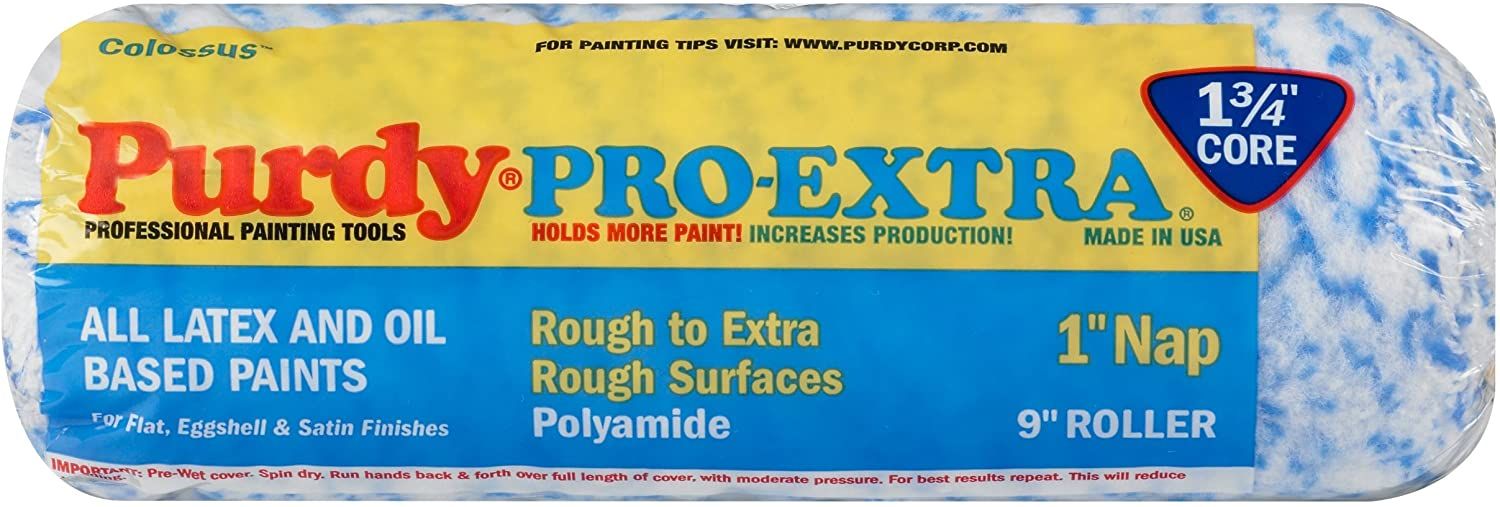
Image Credit: Amazon.ca
Type: Roller
Quantity: 1
Size: 1-inch nap, 9-inch length
Material: Nylon
Best Feature: No dripping or splattering
The Purdy Pro-Extra Colossus Roller Cover is a great option for those working on rough concrete. This roller cover is designed to hold even more paint, allowing you to see your desired results faster. It also has great hold and release technology that prevents drips and splotches from ruining your work.
9. Wagner SprayTech Control Spray Max HVLP Paint or Stain Sprayer

Image Credit: Amazon.ca
Type: Spray
Quantity: 1
Size: 5.08 kg
Best Feature: Consistent coverage with minimal overspray
If you want a smooth finish, the Wagner SprayTech Control Spray Max HVLP Paint or Stain Sprayer can get you one fast. This sprayer uses high volume, low pressure (HVLP) technology to give your surfaces the finest finish. It works with a variety of materials on many different types of projects.
What’s the best type of paintbrush for concrete walls?
When searching for the best brush for concrete, it’s important to know what qualities to look for. These are the top things to consider when choosing a paintbrush for concrete walls, floors, and more.
What’s the best brush material for concrete?
The material of your brush or roller determines how well it will absorb and release the paint you’re working with.
- Nylon: Great for cleanliness and durability.
- Polyester: Stiff bristles that retain their shape for smooth application.
- Nylon-Polyester blends: Combines durability and shape retention to give you a high-quality brush.
What’s the best brush size for concrete?
The size of brush you use on your concrete depends entirely on the size of your project. Here are some sizes you’re likely to consider for concrete projects.
- 2-inch to 3-inch brush: Ideal size for cutting in and painting edges and corners.
- 4-inch to 5-inch brush: Speed up the process for painting large, flat surfaces.
- ¼-inch roller nap: Applies full coverage to the smoothest surfaces.
- ⅜-inch roller nap: Best size for concrete with minimum texture.
- ¾-inch roller nap: Better suited for rough concrete surfaces.
- 9-inch roller length: Most common size for the majority of projects.
- 18-inch roller length: Professional size for completing super-sized projects.
What’s the best paintbrush style for concrete?
There are several different paintbrush styles that help simplify paint application for different types of projects. Here are the different brush styles you might use for concrete projects:
- Thin angle sash: Thin, slanted bristles that are ideal for corners and edges.
- Angle sash: Slanted bristles that are best for cutting in.
- Trim: Flat brushes for painting large, flat surfaces.
- Wall: Thick, flat brushes for painting large surfaces.
What’s the best paintbrush end type for concrete?
The end type of your brush determines what your lines will look like. These are the end types you’re most likely to use for concrete projects:
- Chisel trim brush: Slanted bristles that are perfect for corners and edges.
- Square trim brush: Square-cut bristles for painting flat areas.
- Angled brush: Bristles are cut on an angle and best used for cutting in.
- Round-ended roller: Rounded ends on paint rollers to help prevent overlapping lines.
Best way to paint concrete: brush, roller, or spray?
Whether to use a brush, roller, or sprayer to paint your concrete depends entirely on the type of project you’re working on. Brushes are great for small projects, precision, cutting in, and painting edges and corners. Rollers are great for easily achieving even coverage on flat surfaces and speeding up work on larger projects. If you’re working on a lot of large projects, you might choose to invest in a sprayer – which can be the messier option – but it will help you paint much faster.
Choose a brush if…
- You’re working on a small area of concrete.
- You want to be more precise.
- You’re cutting in or painting the edges of a project.
Choose a roller if…
- You’re working on a large project.
- You’re painting a flat surface.
- You want to speed up the process.
Choose a spray if…
- You have a lot of large projects to work on.
- You have money to invest.
- You’re not afraid to potentially make a mess.
Best way to paint concrete without marks
If you’re painting concrete yourself for the first time, you might be wondering what you can do to get the best results. Here are some tips for painting concrete without marks.
- Check the weather – If you’re working outside, check the forecast so you can avoid working in rain or humidity.
- Clean the concrete – Clean your concrete surface with soap and water to eliminate any dirt and debris that could show in your paint.
- Fill any cracks or holes – Complete any repairs first so they don’t appear in your paint.
- Protect with painter’s tape or sheets – Apply painter’s tape or other coverings on the surface near your project to prevent paint from getting on them and keep your focus on the task at hand.
- Coat with primer before painting – Select a primer that is compatible with concrete and apply it first to keep your work smooth and help the paint stick.
- Apply light pressure – Use light pressure while painting to avoid overlapping lines and brush marks from appearing.
- Use only what you need – Dip brush bristles only ⅓ of the way into the paint and use a paint tray or screen to remove excess paint from rollers, so you don’t produce any blotches, drips, or uneven coverage in your paint.
- Finish before it dries – Plan to complete a single surface in its entirety before the paint dries. This will help eliminate lines and uneven coverage.
Now that you know everything about painting concrete, it’s time to get started. If you think your project is better suited for the professionals, the City Painters are here to help. Contact us here or give us a call for a quote.
